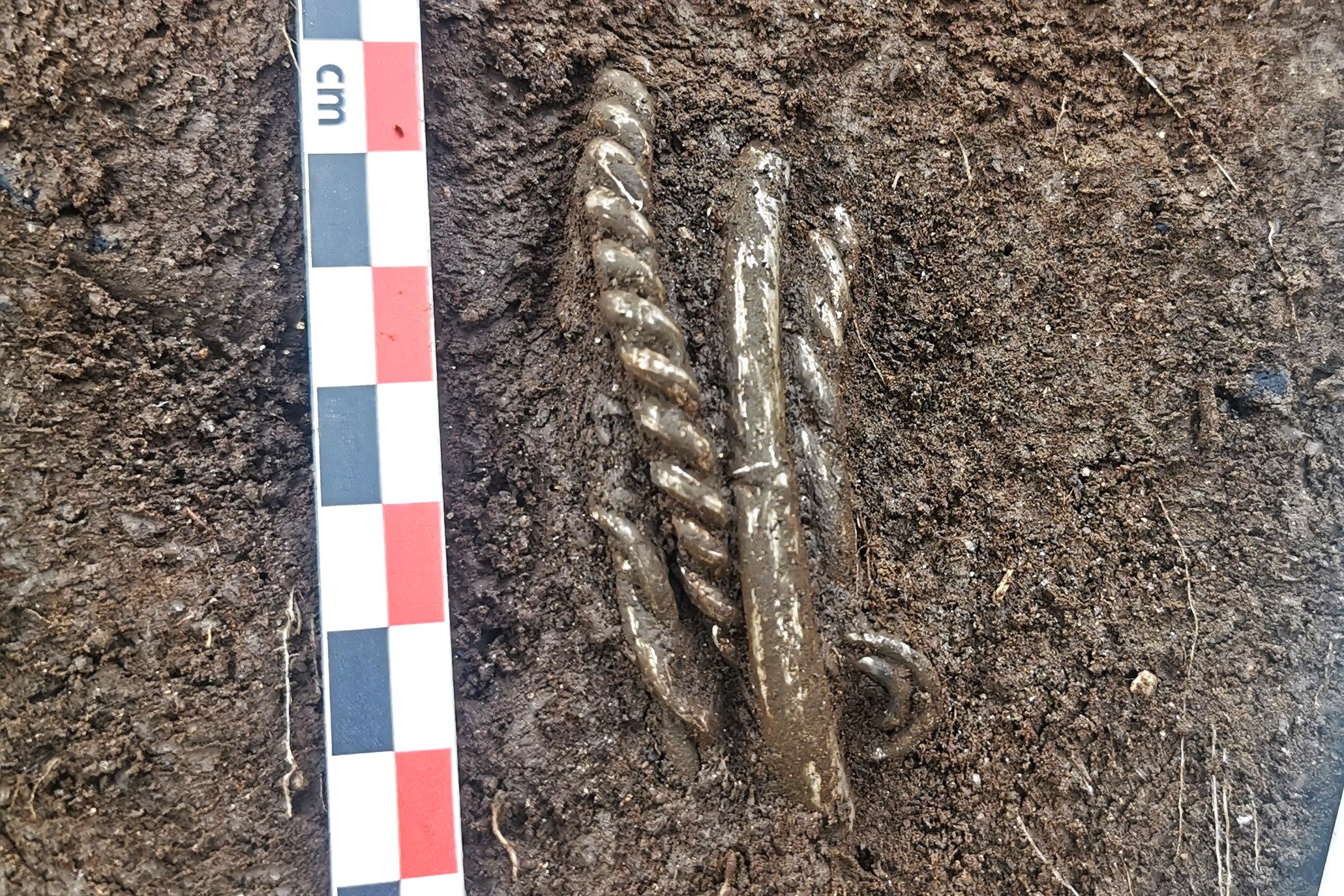A remarkable discovery has been made by archaeologists who uncovered a hoard of Viking treasure that had remained hidden for over a thousand years.
The treasure was discovered on a mountainside in Årdal, located in the Hjelmeland municipality of Norway, as reported by the University of Stavanger (UiS).
These artifacts are believed to date back to the Viking Age, which spanned from the late 8th century to the 11th century. During this time, the Vikings, known for their maritime skills, engaged in raids, colonization, and trade throughout Europe and beyond.

Volker Demuth/Museum of Archaeology, University of Stavanger
“This is undoubtedly the most significant event of my career,” remarked Demuth in an interview with ScienceNorway.
The treasure was initially spotted by UiS archaeologists Mari Krogstad Samuelsen and Ola Tengesdal Lygre. They were involved in a survey before the local farmer began construction on a tractor road.
“At first, I thought it was just twisted copper wires common in agricultural land. But when I realized they were silver and clustered together, I knew we had stumbled upon something special,” Lygre shared.
The treasure lay beneath what was once a small house on a larger Viking Age farm. It is believed that this house may have been occupied by slaves.
“The excavation reveals a substantial Viking farm featuring multiple dwellings for both people and animals. We’ve also discovered remains of soapstone pots, rivets, knife blades, and whetstones,” Demuth noted.
Finding the treasure in its original context is particularly important, as it allows for better understanding of the artifacts’ significance.
“This is a unique find since items are usually uncovered in plowed fields, far removed from their original settings. The unaltered context of this silver hoard offers fresh insight into life during the Viking Age,” Demuth explained.
Evidence suggests the farm may have been set ablaze at some point, potentially leading to the hiding of the treasure. The timing of the treasure’s burial aligns with a tumultuous period in Viking history.
“If the occupants had to flee an attack, hiding valuables made sense. They likely sought a secure spot where they thought the treasure would remain hidden,” Demuth speculated.
Currently, the bracelets and accompanying materials have not been fully excavated. They were removed with a surrounding block of soil for careful laboratory analysis under controlled conditions.
Given the excellent preservation of the site, researchers are optimistic that they will obtain a precise dating of the treasure by analyzing samples from the Viking structure’s hearths and burnt features.
